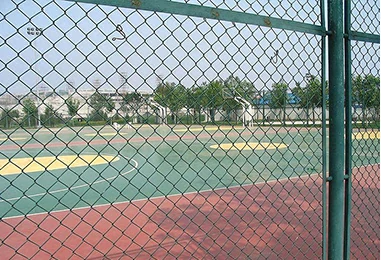 TEL:
+86-13102802206
TEL:
+86-13102802206
 Email:
fencenetting@china.com
Email:
fencenetting@china.com
 Language
Language
 TEL:
+86-13102802206
TEL:
+86-13102802206
 Email:
fencenetting@china.com
Email:
fencenetting@china.com
 Language
Language


Temporary Construction Barriers Ensuring Safety and Efficiency on Job Sites
In the bustling world of construction, safety is not just a priority; it is a fundamental requirement. Among the various tools and practices employed to ensure a secure working environment, temporary construction barriers stand out as a crucial component. These barriers play a vital role in protecting both workers and the public, while also facilitating efficient project execution.
Temporary construction barriers are physical structures designed to delineate construction zones, restrict access to potentially hazardous areas, and minimize the impact of construction activities on the surrounding environment. Made from durable materials such as plywood, metal, or high-density plastic, these barriers can be customized to fit the specific needs of a construction site.
One of the primary purposes of temporary construction barriers is to enhance safety. Construction sites are inherently dangerous, with heavy machinery, complex equipment, and various construction activities posing risks. By clearly marking off areas where these hazards are present, barriers help prevent accidents involving workers and unauthorized personnel. For example, barriers can effectively keep pedestrians away from areas where scaffolding or heavy loads are in transit, thereby minimizing the likelihood of injuries.
Moreover, temporary barriers can significantly improve site management. In busy urban environments, construction often takes place alongside pedestrian walkways, public transport routes, and adjacent businesses. Implementing barriers allows for the establishment of safe pathways for pedestrians, ensuring they can navigate around the construction zone without compromising their safety. This is particularly crucial in urban areas where foot traffic is high and public safety is of utmost concern.

Beyond safety, temporary barriers contribute to the overall efficiency of construction projects. By clearly defining the boundaries of the construction site, workers can operate with a better understanding of their workspace, which can enhance productivity. Workers are less likely to be distracted by external factors or encroach upon areas designated for specific tasks, such as loading and unloading materials or operating heavy equipment. Additionally, well-placed barriers can streamline logistics, making it easier to manage the flow of materials and equipment on and off the site.
Another significant aspect of temporary construction barriers is their role in environmental protection. Construction projects often generate dust, noise, and debris that can adversely affect nearby residents and businesses. By using sound-attenuating barriers and dust screens, construction teams can mitigate these impacts, creating a more considerate construction process. This not only helps maintain good relations with the community but may also comply with local regulations regarding noise and environmental disturbances.
Finally, temporary barriers can be utilized as a canvas for communication. Construction sites can be disruptive, and providing information about the project can help alleviate concerns. Many construction teams use barriers to display details about the project timeline, safety guidelines, and contact information for site managers. This transparency fosters a sense of community and informs the public, which is especially important in urban settings where construction can be an ongoing presence.
In conclusion, temporary construction barriers are much more than mere physical obstructions. They are essential tools that contribute to safety, efficiency, and environmental stewardship on construction sites. By understanding their importance and integrating them effectively into project planning, construction teams can not only protect their workers and the public but also ensure the smooth progression of construction activities. As the construction industry continues to evolve, the role of temporary barriers will undoubtedly remain a key element in building a safer and more efficient environment.